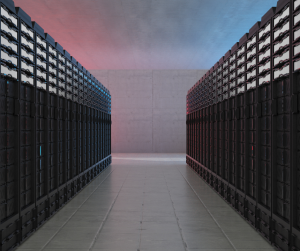In the vast expanse of the digital universe, there exists a pulsating core that powers the very essence of our online world – the enigmatic datacenter. Imagine a realm where streams of information converge and diverge, where the heartbeat of the internet resonates through miles of cables and towers of servers. Welcome to the ethereal domain where bytes and bits dance in harmony, where the invisible threads of connectivity weave a tapestry of endless possibilities.
As we embark on an expedition to unveil the enigmatic heart of the internet, we are thrust into a realm where technology transcends physical boundaries. The datacenter – a modern-day colossus of innovation and data processing prowess – stands as a testament to humanity’s insatiable quest for digital advancement. Beyond the mere steel and silicon lies a labyrinth of interconnected systems that form the backbone of our digital civilization, meticulously engineered to handle the ever-growing demands of our interconnected world. Join us on this odyssey as we unravel the mysteries of the datacenter universe, where the convergence of technology and human ingenuity shapes the landscape of tomorrow.
The Evolution of Datacenters: A Historical Overview
Before we delve into the inner workings of datacenters, it is essential to understand their evolution and how they have transformed over time. The concept of datacenters can be traced back to the early days of computing when large mainframe computers required dedicated spaces to house them. These early datacenters were often small and localized, serving specific organizations or institutions.
However, as technology advanced and the need for more computing power grew, datacenters underwent a significant transformation. The advent of client-server architecture in the 1980s paved the way for larger and more centralized datacenters. These facilities housed multiple servers and storage systems, allowing organizations to consolidate their computing resources.
In the 1990s, with the rise of the internet and the increasing demand for online services, datacenters became even more critical. Companies like Amazon and Google recognized the potential of datacenters in supporting their online platforms and invested heavily in building massive facilities to handle their growing user base.
Today, datacenters have become sprawling complexes that span thousands of square feet or even entire buildings. They are equipped with state-of-the-art infrastructure including redundant power supplies, cooling systems, and advanced security measures. These facilities house racks upon racks of servers that process vast amounts of data every second.
Redundancy and Resilience: Ensuring Uninterrupted Data Flow
One of the key factors that make modern-day datacenters so reliable is their emphasis on redundancy and resilience. Datacenter operators understand that any downtime can result in significant financial losses for businesses relying on their services.
To ensure uninterrupted data flow, datacenter operators implement redundant systems at every level – from power sources to network connectivity. Multiple power feeds from different utility providers are often employed along with backup generators to mitigate any power outages. Similarly, redundant network connections from various internet service providers are established to prevent any single point of failure.
In addition to redundancy, datacenters also invest heavily in cooling systems to maintain optimal operating temperatures for their servers. Advanced cooling technologies such as liquid cooling and hot aisle containment are employed to dissipate the heat generated by the servers efficiently.
Sustainable Datacenters: Embracing Green Technology Solutions
As the demand for datacenters continues to grow, so does their environmental impact. The energy consumption of these facilities is a significant concern, leading many datacenter operators to adopt sustainable practices and embrace green technology solutions.
One approach is the use of renewable energy sources such as solar or wind power to supplement or replace traditional power sources. Datacenters located in regions with abundant renewable energy resources can tap into these sources, reducing their carbon footprint.
Datacenter operators also focus on optimizing energy efficiency by employing advanced cooling techniques, server virtualization, and intelligent power management systems. These measures help reduce overall energy consumption while maintaining high-performance levels.
Security Measures in Datacenters: Safeguarding Sensitive Information
Datacenters house vast amounts of sensitive information, making security a top priority. Multiple layers of security measures are implemented to protect against physical and cyber threats.
Physical security includes restricted access controls with biometric authentication, surveillance cameras, and 24/7 monitoring. Only authorized personnel are granted entry into datacenter facilities.
Cybersecurity measures involve robust firewalls, intrusion detection systems, and encryption protocols to safeguard data from unauthorized access or breaches. Regular security audits and vulnerability assessments are conducted to identify and address any potential weaknesses in the system.
Future Horizons: Innovations Shaping the Next Generation of Datacenters
The datacenter landscape is constantly evolving, driven by technological advancements and the ever-increasing demand for data processing capabilities. Several innovations are shaping the future of datacenters.
One such innovation is the adoption of edge computing, where processing power is brought closer to the source of data generation. This reduces latency and enables real-time analysis, making it ideal for applications like autonomous vehicles and IoT devices.
Another area of focus is the development of more efficient cooling technologies to address the energy consumption challenges associated with traditional cooling methods. Liquid immersion cooling and direct-to-chip cooling are some emerging solutions that promise improved energy efficiency.
Furthermore, advancements in artificial intelligence (AI) and machine learning (ML) are being integrated into datacenter operations to optimize resource allocation, predict failures, and improve overall efficiency.
In conclusion, datacenters have come a long way since their inception. From small localized facilities to massive complexes powering our digital world, they have evolved to meet the ever-growing demands of our interconnected society. With a strong emphasis on redundancy, resilience, sustainability, security measures, and continuous innovation, datacenters will continue to play a vital role in shaping the future of technology.

